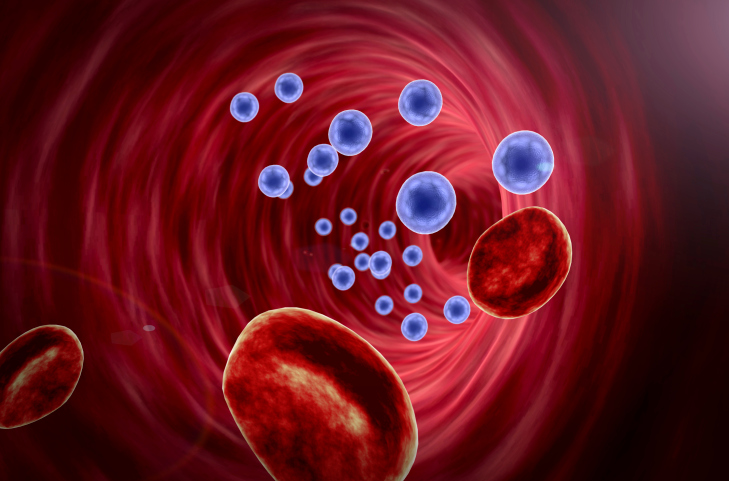
According to a new study published in the Journal of Medicinal Chemistry, researchers have developed a new type of artificial blood vessel coating that can resist blood clot formation. The coating is a thin film of nanorods consisting of aluminum oxide blended with a urokinase-type plasminogen activator—an element that activates a clot-busting enzyme.
The research team used this film to coat the inner surface of a vascular graft, which generated a steady concentration of plasmin—a blood-clot dissolving enzyme.
The team ran several experiments in order to test the properties of the new film-coated vascular grafts. In one test, the team grew artificial clots made of blood plasma mixed with thrombin and placed them in the graft. The clot started to dissolve and leak through the graft. According to study author Yulia Chapurina, “…In reality, our coating would destroy clots at the stage of formation, constantly ensuring an unobstructed blood flow in the graft.”
The team concludes that their system—which is based on the “entrapment” of the drug inside the protective shell—will last significantly longer and offer an unlimited lifetime for artificial blood vessels.
Findings are not just restricted to artificial blood vessels but to many kinds of implants. According to the study’s senior author Vladimir Vinogradov, “The same approach may be used for kidney or liver surgery, but these are plans for the future.”
Sources for Today’s Article:
Chapurina Y. et al., “Synthesis of thrombolytic sol–gel coatings: toward drug-entrapped vascular grafts,” Journal of Medicinal Chemistry, doi:10.1021/acs.jmedchem.5b00654, http://pubs.acs.org/doi/abs/10.1021/acs.jmedchem.5b00654, published online July 22, 2015.
Paddock, C., “New drug-entrapped artificial blood vessels stay clot-free,” Medical News Today web site, August 4, 2015; http://www.medicalnewstoday.com/articles/297673.php.
